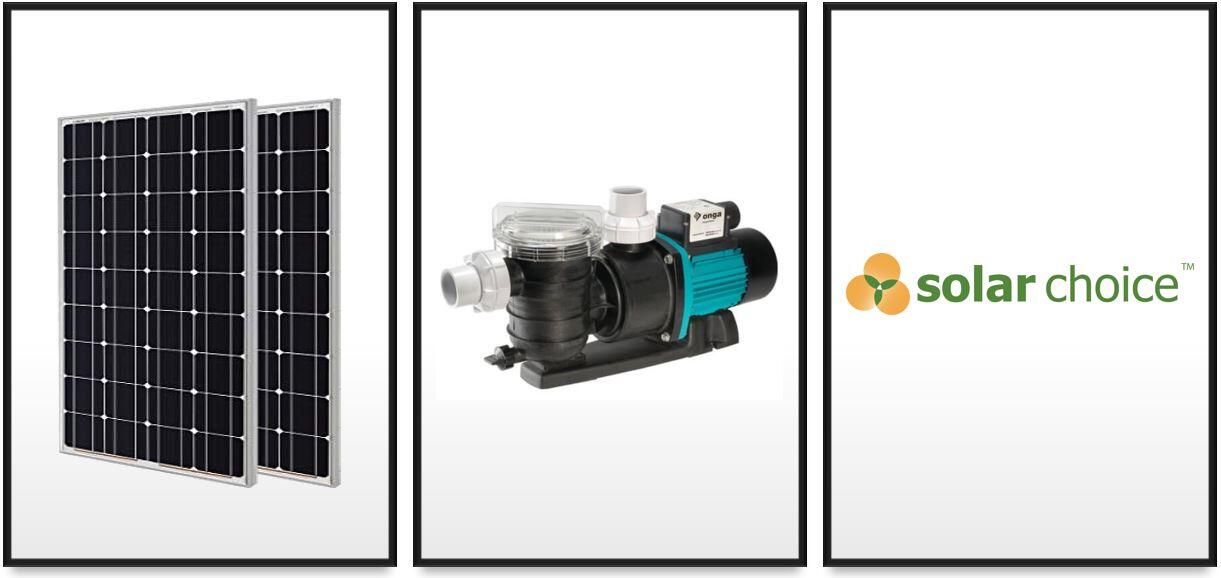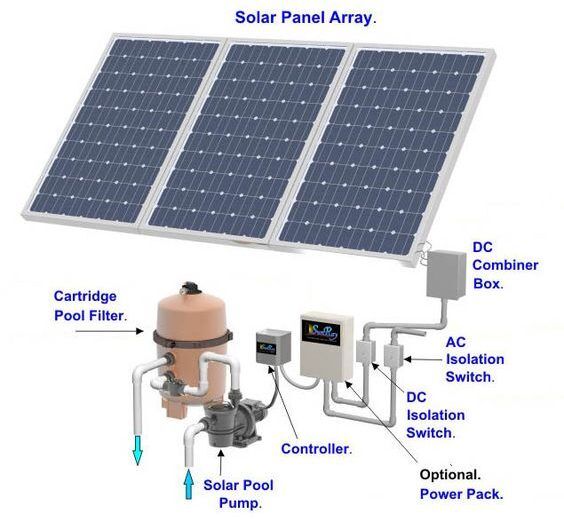A backyard pool is the quintessential lifestyle accessory in Australia, and around 13% of Australian homes have a pool in the backyard. Having a pool provides relief from summer heat without taking a trip to the beach, and hours of fun for family and friends on warm days.
On the flipside, it costs a lot of money to own and run a pool. Not only is installation expensive, running costs are high. The largest annual cost by far is electricity to run the pool pump for essential filtration. This needs to be done year round, though less often in the winter months when pools are likely not used very often, if at all. You can also read about a heat pump hot water system here.
It is estimated that a typical in-ground pool can account for 17% of a home’s electricity usage, which potentially adds $660 to $1,000 annually to a household electricity bill – even if pool pump timers are set to run through the night, when electricity is cheapest.
How do solar pool pumps work?
Solar pool pumps work the same way as regular, grid-connected pool pumps. The main difference is that they harness the power of the sun, not your household electricity, to circulate and filter the water in your pool.
Note that you cannot simply hook up your existing pool pump to a few solar panels. You will need to buy a new dedicated solar pool pump, also known as a Direct Current (DC) pool pump.
A typical set-up for a solar pool pump:
Image from: https://www.pinterest.com.au/pin/390968811379165145/
Compare solar quotes from up to 7 local installers now.
Solar pool pumps are as efficient as traditional pool pumps, and offer many similar features and options. Choosing which solar pool pump is best for your pool will come down to a range of factors:
Type of pool: In-ground or above-ground pools use similar pumps, but pumps for in-ground pools generally need to be more powerful to pump water up and out of the pool.
Size of pump: Or the power output it generates. This is a key question and will be affected by the size of your pool (litres), how fast the water is recycled through the pump and the resistance the pool pump must overcome. Manufacturers generally have a handy guide or checklist to help you decide on the most efficient solar pool pump for your pool.
Talk to your local pool specialist or solar retailer about the right option for your pool, and if they offer a complete kit including the solar pool pump, solar panels and installation.
Alternative: Using a grid-connected solar system to run your pool pump
Most pool pumps are powered by household electricity, so the most elegant solution to save on running costs is to have a grid-connected rooftop solar system that meets the entire energy needs of the home, including the pool.
But this is not always possible. For example, you may add a pool after you have installed solar power, with the additional energy usage not accounted for. Or your roof may not be large enough to accommodate the number of solar panels required to power both your home and your pool.
In some cases, the electricity network provider in your area may limit the number of grid-connected solar panels you can install, which may not deliver enough energy for both your home and pool.
The good news is you can take your pool off the grid and use the energy of the sun to power a solar pool pump directly to save a lot of money, and reduce your carbon footprint.
Compare solar quotes from up to 7 local installers now.
Why solar pool pumps make sense, and save dollars
Once you decide to install a dedicated solar power system for your pool filtration, you’ll need a solar pool pump kit consisting of a solar pool pump, and solar panels to power it. The solar panels will be wired directly into the pool pump, and when the sun shines, your pool pump will run.
Benefits of a Solar Pool Pump |
|
| Completely off-grid | Your pool pump is not grid-connected so you will never pay for electricity to power it. |
| No permission needed | You do not need approval from your local energy grid to install the solar panels connected to your pool pump as they are not connected to the grid. And those panels do not count towards the maximum number of grid-connected solar panels you can install. |
| Mounting options | Solar panels for your pool pump can be mounted anywhere, so they don’t have to take up valuable roof space. You may choose a ground-mounted system if you have space, or on a structure such as your carport, or shed, or cabana. |
| In sync with the sun | The sun shines more in summer than winter, so your solar pool pump will run more often in the months when the pool is being regularly used. |
How much does a Solar Pool Pump set up cost?
The benefits of an off-grid solar swimming pool pump are clear. But before you dive in, consider the set-up costs and the projected working life of the system so you can compare it to the costs of running your existing grid-connected pool pump.
New solar pool pump: You’ll need to replace your existing pool pump with what’s known as a Direct Current (DC) pool pump for solar connectivity, suitable for pools with a capacity up to 90,000 litres. Solar pool pumps are relatively affordable, and cost anywhere from $250 to $750, depending on the brand and the power output that will required to suit the size of your pool.
Solar panels: How many solar panels you need to power your pool pump, and the cost of purchasing and installing them varies depending on the number of panels needed to power the solar pool pump, the ease of installation and your location. Typically, you will need between four and six solar panels, and the cost to purchase and install will likely be somewhere between $1,500 and $4,000.
These estimated costs include installation, which needs to be done by a qualified professional.
Some retailers supply a solar pool pump kit complete with the pump, solar panels, cables, accessories and installation to make it easy to purchase and install.
Once you have installed your solar-powered swimming pool pump system, it costs virtually nothing to run year-to-year. Considering the range of costs for the solar pool pump and the solar panels, the total cost to get up and running could be anywhere from under $2,000 to nearly $5,000.
When you compare that to the estimated annual cost of using electricity from the grid to power your existing pool pump, the payback period will be between three and seven years.
It is important to note that while solar panels generally have a warranty of at least 10 years, solar pool pumps usually only have a two to three year warranty, so replacing the pump should be factored into the cost recovery equation.
Note that direct-connected solar pool pumps are not grid-connected, so will not be eligible for feed-in tariffs to offset the cost of purchase and installation or to reduce your household electricity bill.
Energy not needed for the pool pump cannot go back to the grid, it is simply wasted. By the same token, you will not be able to draw power from the grid if there is not enough sun to power your pool pump at any point in time.
What are solar pool pump options in Australia?
There are many solar swimming pool pump brands available in Australia. Some of the most common and popular brands are:
| Davey | 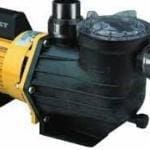 |
| Onga | 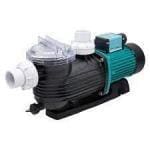 |
| PWS (Pump With Solar) | 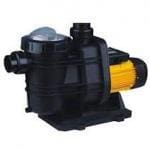 |
| Sunray | 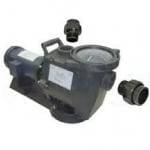 |
| SunSmart | 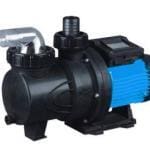 |
Solar pool pumps are available from pool shops and suppliers, hardware stores, and solar power specialists. Some are offered as a complete kit with solar panels included.
What about Solar Powered Pool Heating?
A final word on adding solar-powered pool heating so you can enjoy swimming all year round. Heating your pool with gas has been estimated to cost as much as $17 per hour according to the SA Government.
Solar power offers significant savings for heating your pool. Consider a couple of alternative ways to use solar power for pool heating:
Combine heating with your solar pool pump: Some systems use a solar heat exchanger to use the heat generated by your solar pool pump to warm up your pool. This ensures no energy is wasted, but requires a grid connection so will add (a small amount) to your household electricity costs.
Use a tubular pool heater: These operate in a similar way to solar hot water systems. Water is pumped behind solar panel cells where it collects heat and runs back into the pool. This option can cost up to $1,000, but is relatively inexpensive when compared to the high ongoing cost of traditional gas heating.
When it comes to running your pool, using solar power via your grid-connected solar panels or an off-grid solar pool pump directly connected to a small solar array makes a lot of sense, and will save a lot of dollars.
Since 2008 our knowledge and sophisticated software has allowed over 300,000 Australian households and businesses to make a well-informed choice on their solar & battery installer.
- Most Efficient Solar Panels in Australia - 3 May, 2022
- 10 Greenest Energy Providers in Australia - 3 March, 2022
- Solar Pool Pumps: Costs, Options and Benefits Explained - 1 November, 2021
